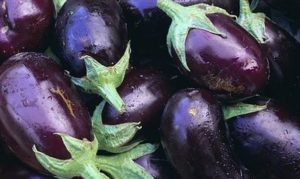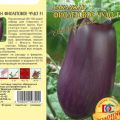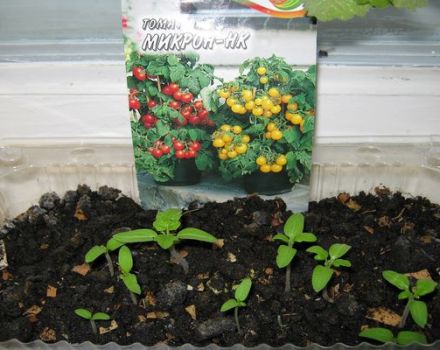Description of the variety of eggplant Universal 6, features of cultivation and care
For residents of the southern regions of Russia, the mid-season variety of eggplant Universal 6, recommended for open ground, is ideal. Under the condition of a long and hot summer, all varietal qualities appear. The disease-resistant plant gives a bountiful harvest of tasty, without bitterness, fruits. In the northern regions of the country, cultivation in greenhouses is possible.
Description of the variety
To enjoy the taste of the fruit annually, it is enough to purchase the seeds of the Universal 6 eggplant once. Then, for the following seasons, harvest the seeds yourself. For this, one fruit must reach biological maturity - a brownish-yellow peel.
Description:
- fruit length 18-20 centimeters. Diameter - 5-6 centimeters. Weight - up to 180 g;
- under favorable conditions, a crop weighing 6.5 kilograms is obtained from a square meter. In a cool summer - about 3 kilograms;
- technical maturity occurs in 125-130 days;
- suitable for canning;
- the flesh is white, with a lot of small seeds;
- fruits without bitterness.
Characteristics of eggplant
Medium early, drought tolerant variety has the following characteristics:
- bushes reach a height of 90 centimeters;
- the variety pleases with its high yield;
- intended for open ground;
- fruits have good transportability;
- leaves are large. In length they reach 22 centimeters;
- heat-resistant grade. Easily withstands constant temperatures up to +30 degrees;
- flowers are purple, with sharp petals, large in size.
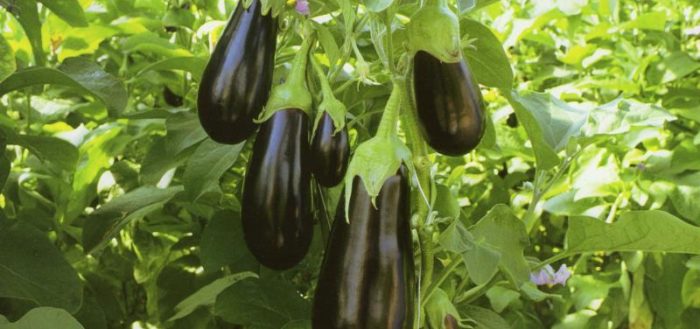
What are the disadvantages of the variety?
The disadvantages include:
- The variety is thermophilic. Lowering the temperature strongly affects the development of bushes and the growth of fruits. This complicates cultivation in the northern regions, where even in greenhouses during the season all varietal qualities do not have time to reveal.
- Compared to hybrids, the Station wagon 6 is less productive.
- At temperatures below +15 degrees, the plant stops growing, and at +10 degrees, it dies.
How to grow a crop
Primary requirements:
- The variety is grown through seedlings.
- Tall bushes need props during fruiting.
- It is recommended to grow eggplants in the southern regions, where it rarely rains. Therefore, for maximum yield, frequent and abundant watering will be required.
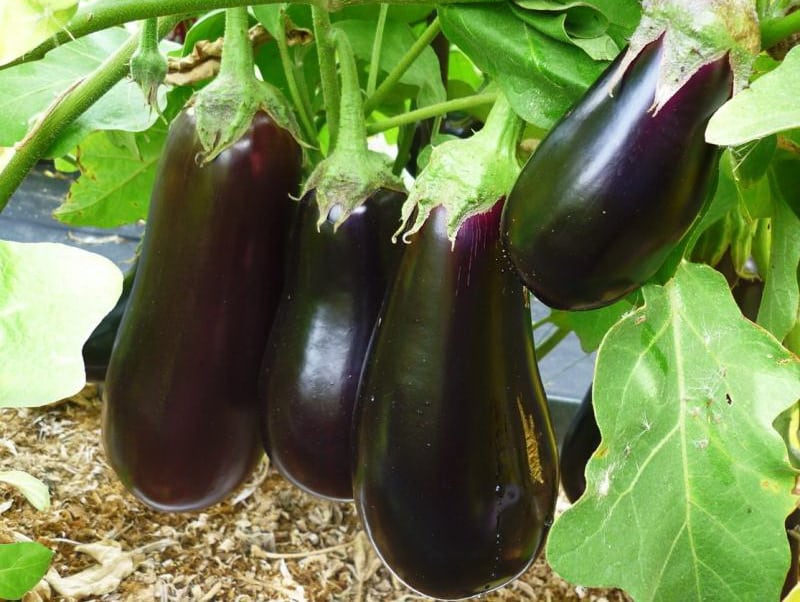
Landing dates
For cultivation in greenhouses, seeds are sown in the third decade of February. For open ground - until March 15.
Sowing seeds and caring for seedlings
In order not to waste time on proper soil preparation, they acquire ready-made soil intended for eggplants.Small containers are prepared for seeds, since eggplants do not like diving.
Seed preparation is possible in two ways:
- In a liter of water, 1 gram of potassium permanganate is diluted. The seeds are placed in the solution and kept for 20 minutes. Then washed with plain water and dried.
- The water is heated to 50 degrees and the seeds are kept for 5 minutes, then dried.
The seeds are deepened into the soil by 1-1.5 centimeters. If planted in boxes, then leave a distance between the seeds of 4 centimeters. This allows you to transplant the shoots without damaging the root system.

Damage to the root system leads to the death of the plant or its disease, which provokes stunting.For germination, you will need to observe the temperature regime. The ideal temperature is 27 degrees. The maximum is 32 degrees. The first shoots will appear in a week. After moving the seedlings to the most lighted place. Otherwise, the first, strongest shoots will bend and stretch.
The roots of the sprouts are at the very surface, so the earth is always kept moist. Water only with settled water.
When the second true leaf appears, the bush is transplanted into a separate container with drainage holes with a volume of no more than 200 milliliters. They are planted with a clod of earth, without burying it into the soil. They are planted at the same depth at which they grew in boxes.
Soil preparation and planting seedlings
Before planting seedlings, they dig up and fertilize the soil. The procedure cannot be performed on the day of planting. The land is prepared in the fall or at least 7 days before planting the seedlings. During this time, the fertilizers will have time to dissolve and go into a well-absorbed form.
Seedlings are watered abundantly one day before planting. They begin to disembark in the evening, after the heat has subsided.
- The holes are dug according to the size of the container in which the seedlings grow. A tall variety is required to be planted according to the 40x70 centimeters scheme.
- The water is heated in advance in the sun and the holes are filled.
- When the liquid is completely absorbed, place the bushes with a clod of earth. Pour in a liter of water and sprinkle with dry earth.
- To retain moisture, the soil is mulched with weeds, straw or dry grass.

Plant care rules
In the early days, the plant gets a lot of stress. Therefore, you will need to create certain conditions for the bushes:
- cover the eggplant from the sun;
- at low night temperatures, cover with a film. In hot summer, it is forbidden to use covering material.
Bushes need:
- weeding;
- elimination of pests;
- top dressing;
- loosening.

Watering and feeding
Water the plants when the soil under the mulch is completely dry. During watering, at least 5 liters of settled water are used per bush. Soaking the ground should be 30 centimeters deep.
The first top dressing of the soil is carried out 7 days before planting the seedlings. To do this, distribute on a square meter:
- compost bucket;
- half a liter of wood ash.
In the absence of organic matter, mix:
- 20 grams of potassium sulfate;
- 12 grams of urea;
- 10 liters of water;
- 50 grams of superphosphate.
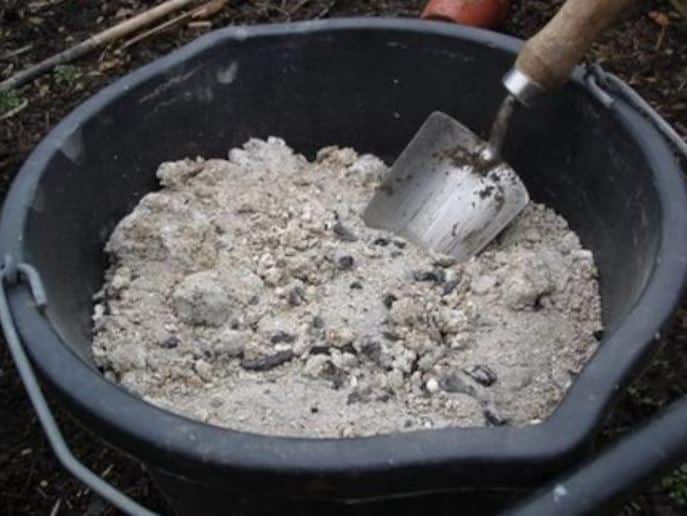
The garden bed is dug up and abundantly watered with the prepared solution. The granules must be completely dissolved, otherwise they will damage the root system of the sprouts.
Bushes are fed every two weeks. Nitrogen fertilizers are supplemented with fertilizing from the infusion of manure, and after three days, ash is added. For this, a mug of ash is dissolved in a 10-liter bucket.
Recommended ready-to-feed mixtures:
- Fertika;
- Fasco;
- Agricola;
- Clear sheet.
Bush formation
For a rich harvest, it is necessary to form the bushes correctly:
- remove all stepsons that appear in the axils of the leaves, which are located below the first bud;
- at the end of summer, when the night temperature is set within 10-14 degrees, pinch the tops of all the stems.All flowers are without ovaries and only formed buds are cut off.

At the beginning of the season, the first ovaries are removed from weakened and lagging bushes. During the entire period of growth, the lower leaves are gradually cut off. All leaves cannot be plucked from the bush. The plant will lose its ability to photosynthesize and lose nutrition. On a half-naked plant, the fruits ripen faster, but stop growing.
Diseases and pests
Pest control:
- To protect against the Colorado potato beetle, immediately after transplanting, the bushes are treated with long-acting insecticides. For these purposes, Corado is well suited, which protects the eggplant for about a month. When setting fruits, chemical treatment is prohibited. The insects are collected by hand.
- Sprinkler irrigation will help prevent the appearance of spider mites in hot weather.
- Spraying with a solution of 10 liters of water, 250 grams of ash helps to cope with whiteflies and aphids. Also, insects are washed off with a strong pressure of water.
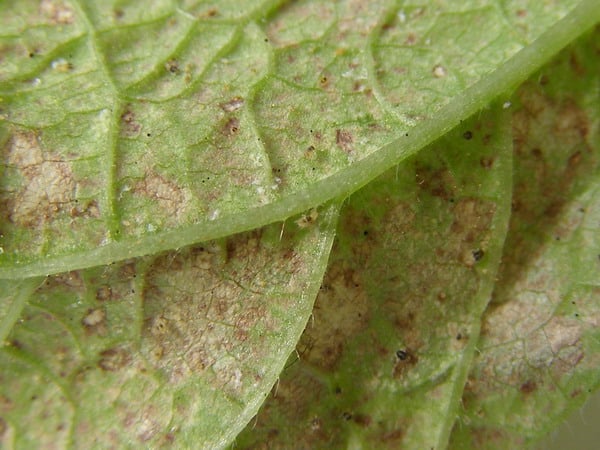
Disease control:
- against late blight, the bushes are treated with Bordeaux liquid;
- when a mosaic appears, to save plantings, diseased bushes are removed, and healthy ones are sprayed with phytosporin;
- fungicide treatment helps to cope with black leg and gray mold;
- with visible plaque of fungal diseases, the cuts are treated with wood ash.
Cleaning and storage
Harvested twice a week. Cut with a stalk - this allows you to store strong fruits for about 25 days in a cool room.

Signs of maturity:
- reaching the maximum size of the fetus;
- characteristic rich skin tone.
Overexposed ripe fruits lose their taste, and the pulp acquires bitterness.

